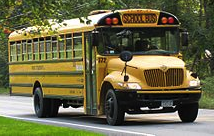In 2009 New Jersey enacted a law aimed at reducing death or injuries to roadside emergency workers such as police officers, ambulance drivers and tow truck operators. Upon seeing an emergency vehicle on the side of the road, what are your responsibilities as the operator of a motor vehicle?
DRIVER RESPONSIBILITIES
The law requires a driver approaching a stationary emergency vehicle with flashing, blinking or alternating red or blue lights to do so cautiously and, if possible based on the existing safety and traffic conditions, “make a lane change into a lane not adjacent to the . . . emergency vehicle.”
If a lane change is impossible, prohibited by law or unsafe, drivers are required to reduce their speed below the posted speed limit and be prepared to stop.
The law covers an “authorized emergency vehicle” which is any vehicle operated by the fire department, police department and ambulance services responding to an emergency call.
TOW TRUCKS
New Jersey is one of thirty states that require drivers to also change lanes or reduce speed for parked tow trucks with flashing amber lights and highway maintenance or emergency service vehicles with flashing yellow, amber or red lights. A tow truck is any vehicle equipped with a sling or tilted bed designed to tow or recover vehicles.
VIOLATIONS OF THE LAW
A driver found guilty of violating New Jersey’s “Move Over” law faces a punishment of $100 to $500.


